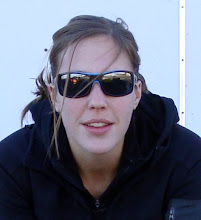
Some people built trenches to sleep in. To build a trench, snow blocks are cut out of the ground surface to form a level bed, and another deeper section is cut out at one end to allow for access and any necessary draining (what would drain, I do not know.) The trenches that were built in our group, along with our wall, were a bit on the elaborate side. In the event of an actual storm, the focus would of course switch to speedy functionality as opposed to carefully calculated snow masterpieces. This picture shows Matt lying in his trench. You can’t see it from this picture, but he has a set of stairs leading to the ground level above. He also finished his trench with a roof. Very impressive. We had a debriefing the next day, and those who built trenches said that in general, they were glad they went through the experience, but would probably not choose this structure again in the future. One of the common complaints was that it was difficult to successfully pee into a pee bottle when you are unable to sit up. Also, given that they were cramped, it was hard to maneuver and put more clothes on if you got cold. The pee bottle stories were really quite hilarious. One guy in our group, Josh, talked about the art of contorting yourself into a workable peeing position, and then the trauma of getting to the top lip of the pee bottle before you are finished urinating. I am still laughing, even as I write this, thinking of Josh re-enacting his pee bottle issues. As a side note, Josh and Matt are two from a larger group of folks who just left to camp and conduct research at a place called Blood Falls in the Dry Valleys. I consider everyone in that group a friend and I hope to see them again some day. Fantastic people.

























